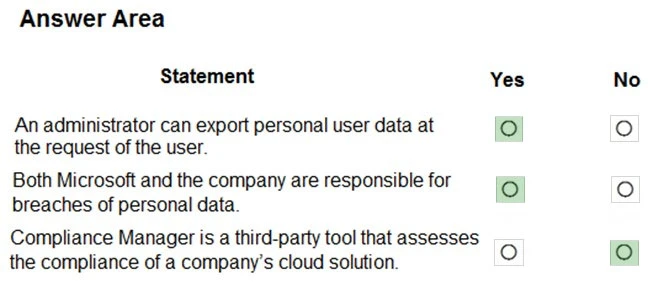A company wants to ensure they comply with common data privacy standards and regulations.
For each of the following statements, select Yes if the statement is true. Otherwise, select No.
NOTE: Each correct selection is worth one point.
Hot Area:



The components that are synchronized between Dynamics 365 Sales and Outlook are tasks, appointments, and contacts. Tasks represent actions that need to be performed and are crucial for managing work items, appointments are vital for scheduling meetings and events, and contacts represent business or personal connections necessary for communication purposes. Phone calls and accounts are not typically synchronized in the same manner as tasks, appointments, and contacts within the standard Dynamics 365 and Outlook synchronization features.
A single Power App can be designed to be responsive, adapting to various screen sizes and devices like desktops, laptops, tablets, and mobile devices. Since the requirement states that all salespeople need access to the same forms, views, and reports, creating just one app ensures that everyone uses the same interface regardless of the device they are using.
The organization is using a cloud service model where it owns and manages the software applications as well as the data hosted in Azure. This scenario fits the definition of Platform as a Service (PaaS). PaaS provides a platform allowing customers to develop, run, and manage applications without the complexity of building and maintaining the infrastructure typically associated with developing and launching an app. SaaS (Software as a Service) would be used if the software was fully managed by the service provider, and IaaS (Infrastructure as a Service) would be used if the organization was managing more granular infrastructure resources such as virtual machines, but since the question specifies both applications and data are being managed, PaaS is the appropriate model.
Hosting a Dynamics 365 development sandbox on Microsoft Azure offers a higher level of system availability in the event of a disaster due to Azure's robust disaster recovery options and globally distributed datacenters. Additionally, Azure provides the ability to easily scale for increased growth, supporting dynamic resource allocation to meet changing demands without significant infrastructure investments.